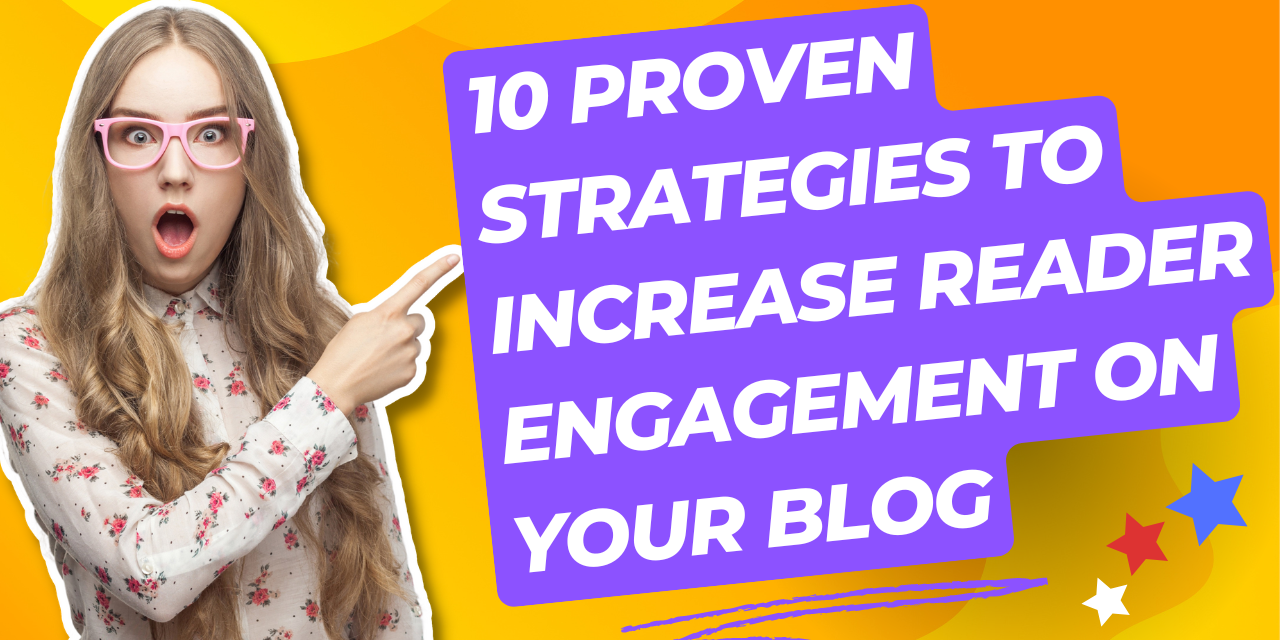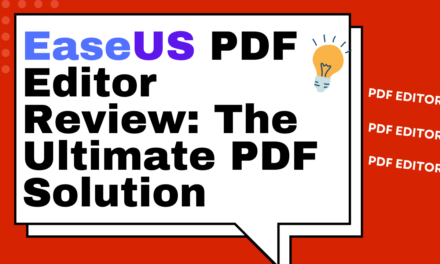In the vast ocean of online content, getting readers to your blog is just the first step. The real challenge lies in keeping them engaged. Engagement is the key to building a loyal audience, driving conversions, and ultimately growing your blog’s reach. But how do you keep readers interested once they’ve clicked on your content? Here are 10 proven strategies to boost reader engagement on your blog.
1. Create Interactive Content
Why It Works:
Interactive content invites readers to actively participate in your blog, rather than passively consuming information. It transforms your blog from a one-way communication platform into a dynamic experience.
How to Implement It:
- Quizzes and Polls: Integrate quizzes that test your readers’ knowledge or polls that ask for their opinions on relevant topics. For instance, a blog about digital marketing could feature a quiz titled “How Much Do You Know About SEO?”
- Surveys: Ask your readers for their feedback on your content or suggestions for future topics. This not only engages them but also provides you with valuable insights into their preferences.
- Interactive Infographics: Use infographics that allow users to click and explore different sections. Tools like Canva and Visme make it easy to create engaging, clickable graphics.
2. Leverage Social Proof
Why It Works:
Social proof, the psychological phenomenon where people look to others to determine their own actions, can significantly enhance reader engagement. When readers see that others are engaging with your content, they are more likely to do the same.
How to Implement It:
- Display Comments and Shares: Highlight the number of comments and shares your blog posts receive. This can create a sense of community and encourage more readers to join the conversation.
- Testimonials: Feature testimonials from satisfied readers or influencers in your niche. This can be especially effective in building trust and encouraging new readers to engage.
- User-Generated Content: Encourage readers to contribute content, such as guest posts, reviews, or photos. Featuring user-generated content not only provides fresh material but also fosters a sense of ownership and community among your readers.
3. Optimize Your Comment Section
Why It Works:
A lively comment section can be a goldmine for reader engagement. It allows for meaningful interaction and fosters a community around your content.
How to Implement It:
- Ask Open-Ended Questions: Encourage discussion by asking open-ended questions at the end of your posts. For example, “What strategies have you used to increase blog engagement? Share your experiences in the comments below!”
- Respond to Comments: Take the time to reply to comments. This not only shows that you value your readers’ input but also encourages further interaction.
- Moderate Effectively: Keep the comment section a positive space by moderating comments for spam or inappropriate content. Tools like Akismet can help automate this process.
4. Use Compelling Visuals to Increase Reader Engagement
Why It Works:
Visual content is processed faster by the brain and can make your blog posts more engaging. It helps break up text, making your content more digestible and appealing.
How to Implement It:
- High-Quality Images: Use high-resolution images that complement your content. Stock photo sites like Unsplash and Pexels offer a vast selection of free, professional-quality images.
- Infographics: Create infographics to visually represent data or processes. Infographics can increase engagement by making complex information easier to understand.
- Videos: Embed short videos related to your content. Videos are highly engaging and can help clarify concepts that might be difficult to explain with text alone.
5. Craft Engaging Headlines
Why It Works:
Your headline is often the first (and sometimes only) chance you have to grab a reader’s attention. A compelling headline can significantly boost engagement by enticing readers to click through and read your post.
How to Implement It:
- Use Power Words: Words like “ultimate,” “proven,” “essential,” and “exclusive” can make your headlines more compelling.
- Include Numbers: Headlines with numbers tend to attract more attention. For example, “10 Proven Strategies to Increase Reader Engagement” is likely more engaging than “Strategies to Increase Reader Engagement.”
- Ask Questions: A headline that poses a question can spark curiosity. For instance, “Are You Making These Common Blogging Mistakes?” invites readers to find out more.
6. Incorporate Storytelling
Why It Works:
Storytelling creates an emotional connection with your readers, making your content more relatable and memorable. People are naturally drawn to stories, which can significantly increase reader engagement.
How to Implement It:
- Personal Anecdotes: Share personal stories or experiences that relate to your content. This makes your blog feel more personal and authentic.
- Case Studies: Use case studies to illustrate how concepts or strategies work in real life. This not only adds credibility to your content but also helps readers see the practical application of what you’re discussing.
- Narrative Structure: Structure your blog posts like a story, with a clear beginning, middle, and end. This can help keep readers engaged from start to finish.
7. Offer Exclusive Content
Why It Works:
Exclusive content gives readers a reason to engage with your blog on a deeper level. It creates a sense of value and makes your audience feel special.
How to Implement It:
- Email Subscriptions: Offer exclusive content, such as eBooks, checklists, or templates, to readers who subscribe to your email list. This not only increases engagement but also helps grow your email list.
- Members-Only Content: Create a section of your blog that is accessible only to members. This could include in-depth guides, webinars, or special articles. Tools like Patreon or WordPress membership plugins can help you set this up.
- Early Access: Give your most loyal readers early access to new content or features. This can be particularly effective for building anticipation and engagement around new projects or launches.
8. Write with a Conversational Tone
Why It Works:
A conversational tone makes your content more approachable and engaging. It helps create a connection with your readers, making them feel like they’re having a conversation with a friend rather than reading a formal article.
How to Implement It:
- Use First and Second Person: Write using “I” and “you” to make your posts more personal and direct. For example, “In this post, I’m going to show you how to increase reader engagement.”
- Ask Rhetorical Questions: Engage your readers by asking rhetorical questions that get them thinking. For example, “Ever wondered why some blogs get all the attention while others struggle?”
- Use Simple Language: Avoid jargon and complex sentences. Write as if you’re speaking to a friend, which makes your content more relatable.
9. Encourage Social Sharing
Why It Works:
Social sharing not only increases your content’s reach but also signals to others that your content is worth reading. When readers see that a post has been widely shared, they’re more likely to engage with it themselves.
How to Implement It:
- Add Social Sharing Buttons: Place social sharing buttons prominently on your blog posts to make it easy for readers to share your content. Tools like Sumo or AddThis can help you integrate these buttons into your blog.
- Craft Shareable Content: Write content that is inherently shareable. Lists, how-to guides, and infographics tend to perform well on social media.
- Encourage Sharing in Your Content: Simply asking readers to share your content can be surprisingly effective. For example, “If you found this post helpful, don’t forget to share it with your network!”
10. Analyze and Adapt
Why It Works:
Regularly analyzing your blog’s performance allows you to understand what engages your readers and what doesn’t. By adapting your strategy based on these insights, you can continually improve reader engagement.
How to Implement It:
- Use Analytics Tools: Tools like Google Analytics or Hotjar can provide valuable insights into how readers interact with your blog. Look at metrics like time on page, bounce rate, and scroll depth to understand engagement levels.
- A/B Testing: Test different versions of your headlines, images, and CTAs to see which ones resonate most with your audience. Tools like Optimizely can help you run A/B tests on your blog.
- Regularly Update Content: Revisit old blog posts and update them with new information, visuals, or CTAs. This can help keep your content relevant and engaging over time.
Conclusion
Increasing reader engagement on your blog requires a mix of creativity, strategy, and continuous improvement. By implementing these 10 proven strategies—ranging from creating interactive content to analyzing your blog’s performance—you can transform your blog into a vibrant community where readers are eager to participate, share, and return time and time again.
Remember, the key to engagement is not just attracting readers but keeping them invested in your content. When you make your blog an engaging and interactive space, you not only boost reader satisfaction but also pave the way for long-term growth and success. Happy blogging!
Watch our YouTube Video instead










